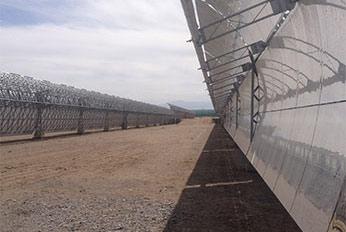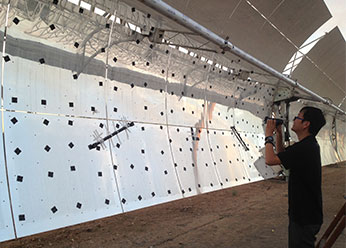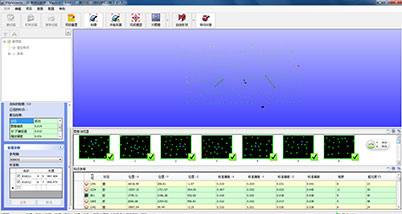
Tianwei New Energy’s mission is to build modern, large-scale photovoltaic facilities to supply usable solar power throughout China. It researches, manufactures, sells and services midstream and downstream products related to PV solar energy, including crystalline silicon wafers, PV cells, modules, and PV systems engineering.
The company is currently building a solar energy base, that will occupy over 67 hectares of land, have a capacity of 1GW wafers, 1GW batteries and 1GW modules, and be worth over USD $1 billion. Construction is to be completed by the end of 2015.
Quality control measurements for solar panels
The first installment of Energy China’s new solar energy park is located in Diwopu, in Gansu Province, which includes part of the Gobi Desert and is rich in solar and wind energy resources. The Energy China team recently had to travel to Diwopu to conduct on-site quality control (QC) measurements of the installed reflective panels to ensure that they were consistent with the original design specifications.
The challenges of QC in the Gobi desert—overcome thanks to the MaxSHOT 3D!

First, the team applied coded targets on the solar panels during the daytime. These coded targets were spread in a non-linear fashion to ensure optimal triangulation. They are used for image association. Then, in the evening when the panels had cooled, application engineers took photos from different angles and distances. Scale bars were positioned in the measurement volume among the coded targets to allow model scaling. Using the MaxSHOT 3D photogrammetric video camera which produces high accuracy positioning models based on a series of photos, the team was able to get all the images that they needed in only 10 minutes. It was indeed that easy!
Creaform’s 3D software platform and application suite, VXelements, was used to process the target-point data and perform the required calculations. Five minutes later, the team got the results—much faster than having used other traditional photogrammetric equipment.
Energy China’s team decided to conduct additional measurements, using the same process, on the back of the solar panels. In order to help their analyses, they hoped to witness changes on the surface of the solar panel in two different states. After processing in VXelements, the team made comparisons of the target point information with the original CAD models, and generated a 3D color map and report.
Energy China was impressed with the speed and accuracy of the measurements acquired from 6×12 m solar panels thanks to Creaform’s MaxSHOT 3D and VXelements. Now, the team will be able to ensure that the solar panels remain on target with the original specs.
Tianwei New Energy
www.twnesolar.com
Creaform
www.creaform3d.com





